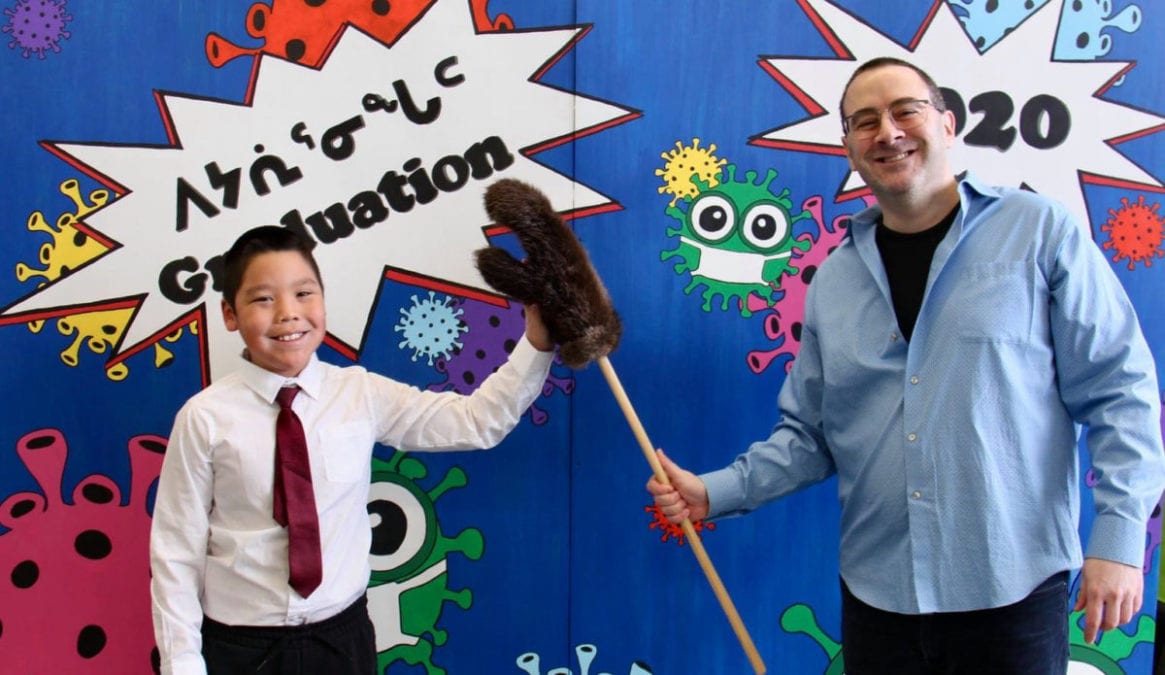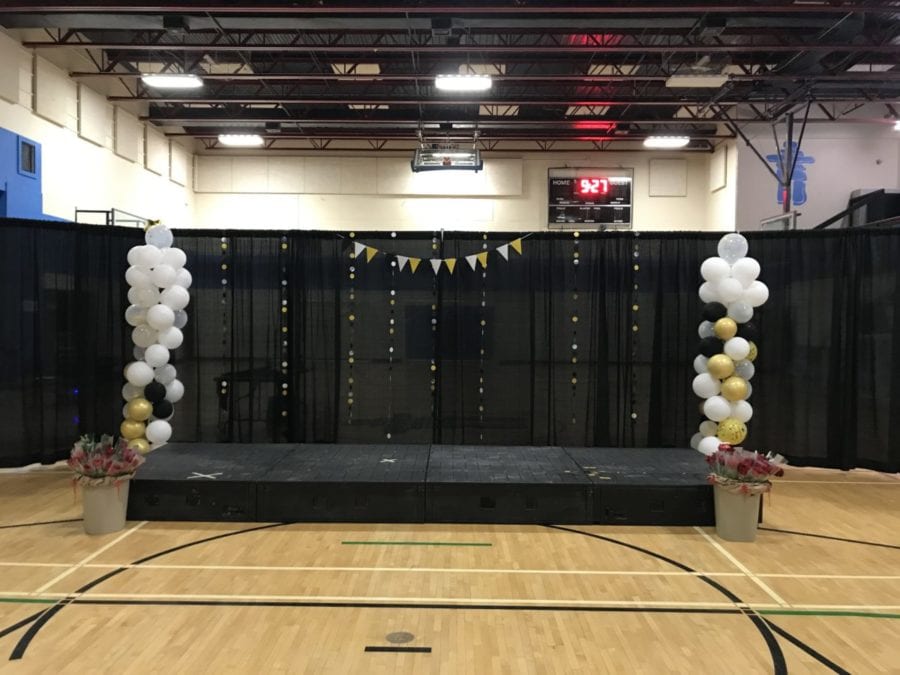Across the territory, graduation ceremonies were celebrated with a splash of creativity while adhering to Covid-19 restrictions. Typically in Nunavut, a graduation ceremony takes place in a school gymnasium or a large indoor community space. Family members, friends and graduates gather together to celebrate with various entertainment, feasts and speeches.

photo courtesy of Scott MacDonald
This year however, due to limited gatherings and physical distancing, graduation committees have had to find "creative solutions" to celebrate their graduates beyond the traditional ceremony.
In order to comply with the restrictions for Covid-19, Iqaluit’s Inuksuk graduates were each assigned a 10-minute time slot during the ceremony. Each graduate arrived at the event with a maximum of five individuals of their choosing, explained Tess Thurber, an organizer on Inuksuk High School’s graduation committee.
“We had staff assigned to time slots to ensure we had our cheering squad on the balcony for when the graduate crossed the stage,” said Thurber.
A video compiled with a quilliq lighting presentation, a slideshow of the graduates and speeches from the principal, keynote speaker and valedictorians was shown.
“We were fortunate to be able to, in the end, have the ceremony inside the gymnasium on a smaller scale than our usual ceremony,” said Thurber.
Inuksuk High School graduate Alesha-Elijah Tiglik said, “It isn’t what any of us pictured our big day to be, but it was still the greatest feeling to walk across the stage and say I did it.”
Besides the 40 high school graduates, Iqaluit’s middle and elementary school students also graduated in an unconventional fashion.

photo courtesy of Tess Thurber
Grade 8 graduates from Aqsarniit Middle School celebrated with a “drive-thru graduation."
“Families and graduates drove through the parking lot where staff and teachers greeted them, followed by a family picture,” said Sandi Chan, communications officer with the Department of Education. “They then received their final report card and their graduation certificate.”
At Joamie Elementary School graduates came “dressed-up to the doors of the school” to receive their diplomas and take photos. To adhere to physical distancing, graduates and their families attended the event during their specific time slots.
Nakasuk Elementary School however, opted for postponing their graduation celebration until fall.
Outside of Iqaluit, other Nunavut schools followed similar yet slightly different ways of celebrating their graduates.
In Taloyoak, Netsilik School’s graduation was celebrated through the local radio and a parade through the community.
Similarly in Gjoa Haven, a graduation parade was held in honour of the Grade 12 and Grade 6 graduates from Qiqirtaq High School and Quqshuun Ilihakvik Elementary School respectively.
Cambridge Bay’s Kiilinik High School held their graduation ceremony outdoors. “Family and community members were invited to drive by and honk or wave at the graduates,” said Chan.
Arviat’s John Arnalukjuak High School celebrated their graduates by organizing a drive-through diploma ceremony, where students picked up their diplomas on the front steps of the school. The graduation ceremony was followed by a community parade.
Pond Inlet was another community that celebrated its high school graduates with a parade through the community.
“Meaningful milestones can still be recognized even if the ceremonial actions are different," said Chan, adding the determination of families, students and school staff is to be applauded.
“Being innovative and resourceful to celebrate their graduations despite a global pandemic interrupting their original plans is a testament to the strength of Nunavut school communities.”